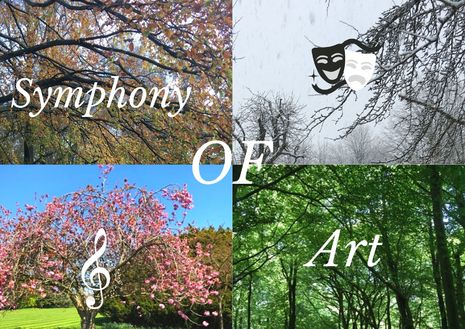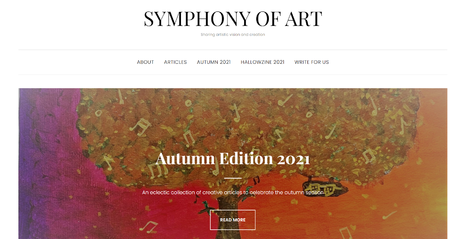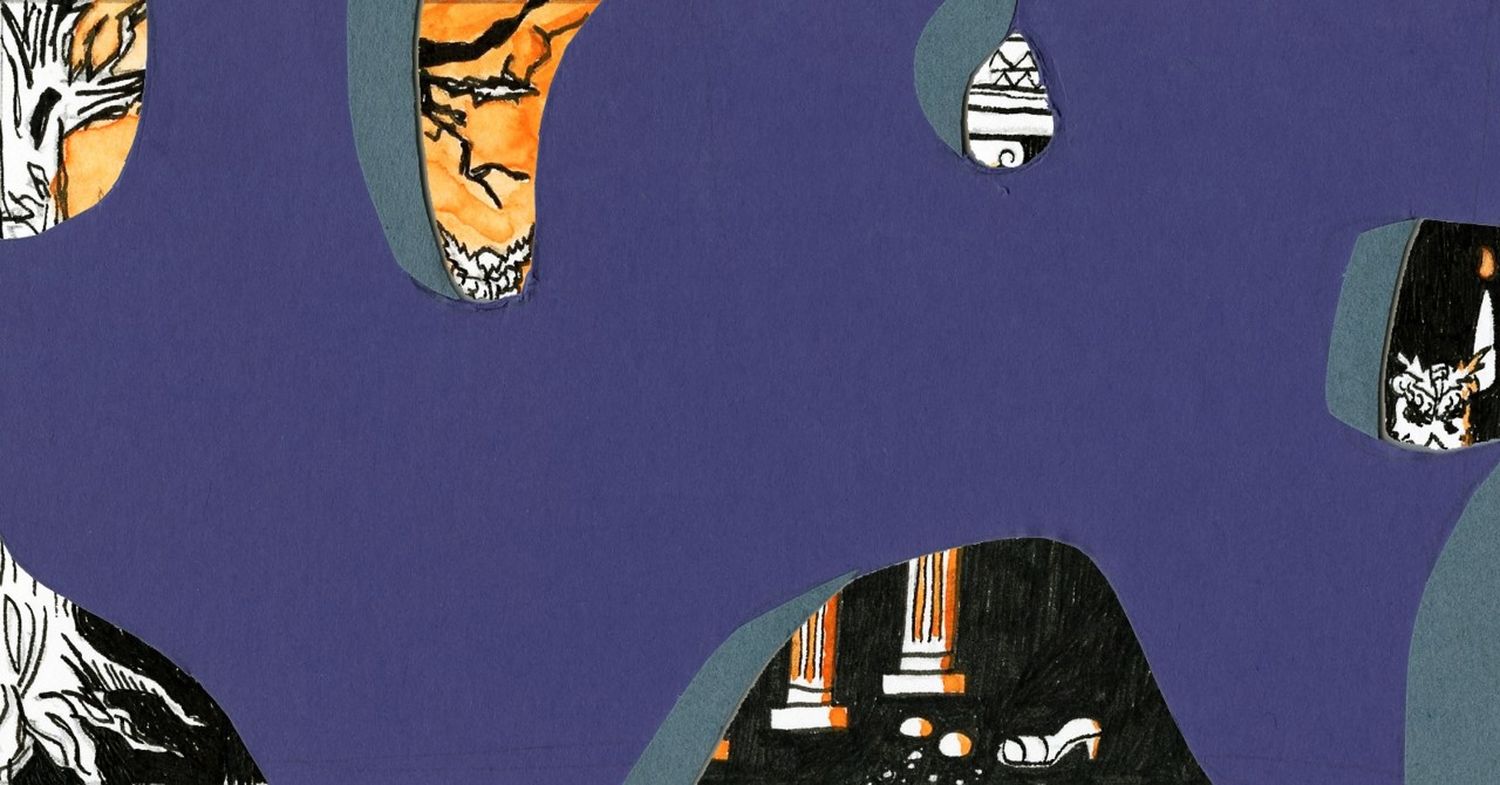The Symphony of Art magazine interview: shifting with the seasons
Arts Editor Famke Veenstra-Ashmore interviews Varsity’s Lifestyle Editor Nadya Miryanova about the development and evolution of her new zine

Autumn, winter, spring and summer are the core temporal pillars governing the Symphony of Art magazine. As I interview founder and co-editor Nadya Miryanova, it becomes clear that guarding and amplifying the creative arts and all its elements is the primary occupation of the zine. With the shifting of the seasons, the team wish to portray the constantly evolving arts sector and scene, louden voices, and develop a unique image which incorporates creativity in a unique way.
The publication first entered the scene in Michaelmas 2021 with its cleverly titled 'Hallowzine 2021', which drew on “ghostly creations” evoked by the dark and enigmatic autumnal season. A festive teaser issue introduced the team behind the zine and clearly marked it as a space intended to “spotlight the creative arts”. With no delineations between fiction and non-fiction, which Miryanova points to as one of its unique aspects, the zine welcomes submissions of any kind within this artistic bracket.

Poetry and fine art, such as in-house poet Renèe Eshel’s 'Full pantry’ and artist Phillipa Murphy’s gallery 'Halloween in Art’, make up many of the pieces which Miryanova has published from her internal team, but “not one format is favoured.” Alongside Vulture co-editor Lotte Brundle, Miryanova curates and co-edits pieces that fall broadly into the categories of art, stage & screen, literature, and music, but says the zine aims to be a “safe space for all creatives to share their viewpoints, stories, artistic projects” and to “promote the freedom of creative expression.”
“The zine is a safe space for all creatives to share their viewpoints”
Symphony of Art is entirely self-funded and based online with a website Miryanova “built from scratch”. With many creative publications migrating online, Miryanova talks about the “flexibility and accessibility” which this approach lends itself to. Free to read, the zine is part of a greater movement towards free creative expression and publication. However, print is not out of the question for the team; Miryanova is hoping to craft a “print version in summer which combines some of our favourite articles into a publication that encompasses the year as a whole — thus spotlighting all the seasons.” The publication also derives its aesthetics from the seasons, with a blend of colour, format, and layout all corresponding to the times of year portrayed. Miryanova wants to “evolve within the format we currently have, using a similar yet alternative style for future editions as time goes on.”
Nadya Miryanova points out how much of Cambridge zine culture revolves around termly calls for submissions and editions. With her new zine, Symphony of Art, Miryanova aims to disrupt these designated termly patterns of creativity by finding guidance in the natural passing of time. She describes how the zine, by “taking the seasons as a form of reflection and inspiration”, has flourished into a diverse and ever-changing publication which can be “interpreted as innovatively as creatives would like.” While submission windows will naturally coalesce with terms as we move through the year, Miryanova hopes by branding it with the seasons she can detach the formality of normal bases for submissions.
"Symphony of Art aims to be a preserving and flexible force”
The zine’s adaptability is striking, with a website that can be “changed and altered at any time — mirroring the shift in the seasons.” Unlike other zines which publish highlighted pieces online or publish print-style on formats like Issuu, Symphony of Art’s website is designed to be interacted with, and boasts a “distinct style” which refuses to be “fixed”. In an industry where funding is scarce, and value is constantly overlooked, Symphony of Art’s accessibility is inspiring. Miryanova reflects on her motivation behind developing the zine, citing how she “thought of the idea in the first lockdown when I was reading about the defunding of the Arts sector in schools and society more generally — it became worse with the pandemic.” She sees the magazine “as a vehicle to promote creativity and give people a space dedicated to writing about the creative arts”, which has been historically and currently overlooked. We discuss how Symphony of Art is unique in its emphasis on the creative arts as a sector, and Miryanova reflects on how “no individual magazines within Cambridge specifically promoted them.” Symphony of Art aims to be that preserving and flexible force.
Collaboration is a vital aspect of the magazine’s structure, Miryanova argues, citing how it “wouldn’t exist if not for the input of other people.” The team consists of section editors, columnists, and illustrators, who work together and are bound by the influence of the seasons. When asked about whether creating her own, independent zine gave her greater creative autonomy, she responded “in some respects. I started up the magazine from scratch and was able to choose the website to use — the design for the issues — there was nothing pre-established. But working for publications such as Varsity and CLC does still involve a lot of creative autonomy, but as with any personal project, you have more liberty in shaping it.” The overarching drive for it to be governed by the seasons is evident in its design and structure — “spacing, structure, and reflection is the design’s primary focus.” This certainly shines through in the zine’s public image.
Moving forward, Miryanova is excited at the prospect of increased involvement. “Anyone can get involved with writing articles or sending art — our emails are always open but we especially welcome pieces that are fitted to the different editions.” The zine will be publishing a Winter edition in February, with a double edition for Spring and Summer seeking submissions and applications in “mid-March, as it’s a busy time for students.” Miryanova looks forward to developing the reach and presence of the Symphony of Art zine further as a creative outlet for creatives at Cambridge who share her desire to preserve, defend, and contribute to the creative arts.
The Symphony of Art zine can be found here: https://symphonyartzine.co.uk/. Facebook: https://www.facebook.com/symphonyartzine Instagram: https://www.instagram.com/symphonyartzine/ Email: symphonyarteditorial@gmail.com
 News / SU reluctantly registers controversial women’s soc18 December 2025
News / SU reluctantly registers controversial women’s soc18 December 2025 Features / Should I stay or should I go? Cambridge students and alumni reflect on how their memories stay with them15 December 2025
Features / Should I stay or should I go? Cambridge students and alumni reflect on how their memories stay with them15 December 2025 News / Dons warn PM about Vet School closure16 December 2025
News / Dons warn PM about Vet School closure16 December 2025 News / Cambridge study finds students learn better with notes than AI13 December 2025
News / Cambridge study finds students learn better with notes than AI13 December 2025 News / Uni registers controversial new women’s society28 November 2025
News / Uni registers controversial new women’s society28 November 2025











